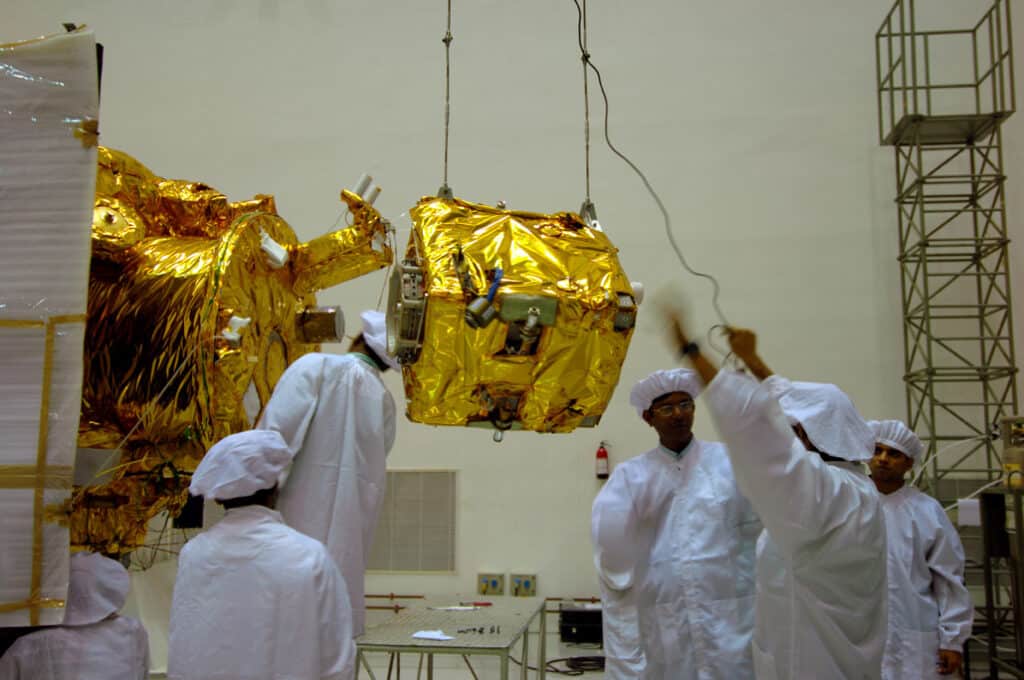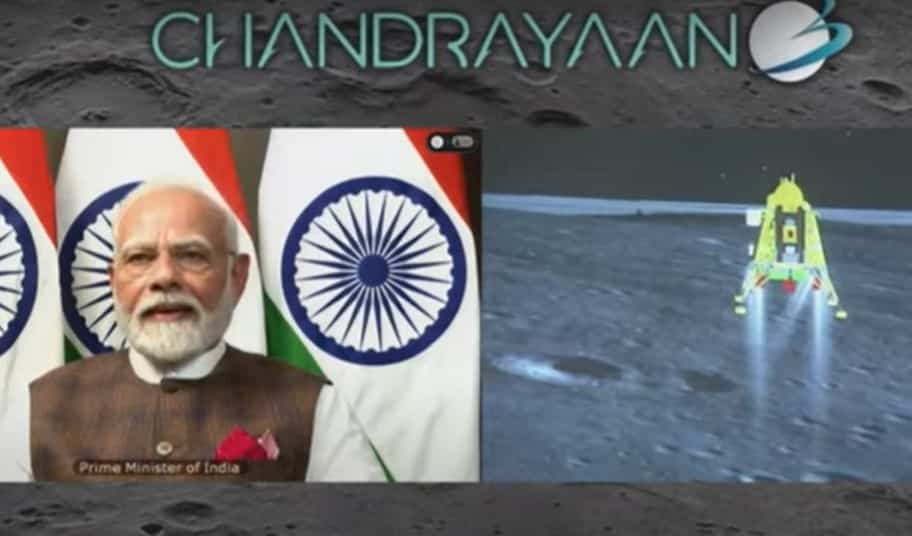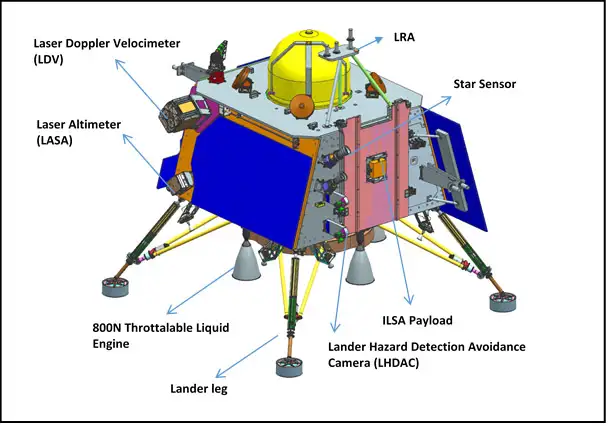This Week in History recalls memorable and decisive events and personalities of the past.
August 23rd 2023 – Chandrayaan-3 mission initiated first Moon landing in Indian history

Launch of the Chandrayaan-3 [Phoenix7777: HORIZONS System, JPL, NASA, https://commons.wikimedia.org/w/index.php?curid=134003110]
This week India made history, becoming the fourth nation in history to land a craft safely on the lunar surface.
The other countries to have achieved the same feat are the United States, China, and the Soviet Union. By coincidence, the first Russian spacecraft, Luna-25, was planned to land a few days prior but due to a technical malfunction crashed onto the moon’s surface on 19 August.
The Indian probe, the Chandrayaan-3 – Chandrayaan means moon vehicle in Sanskrit – was launched last month, on 14 July.

Animation of Chandrayaan-3’s orbit of the Earth, and interception with the Moon [Phoenix7777, https://commons.wikimedia.org/w/index.php?curid=134003110]
The probe’s successful landing marked a major triumph for India’s space agency, the Indian Space Research Organisation (ISRO), which had begun planning for its first lunar mission as far back as 1999. ISRO is much older, however, having been founded in 1969. For much of its history, it worked closely with the Soviet and then Russian space programmes. India sent its first satellite into orbit in 1980, its first attempt a year earlier having failed.
During the 1990s India greatly improved its launch capability and successfully managed to launch hundreds of satellites into orbit around the Earth. The refusal of the United States to allow India to use its Global Positioning System (GPS) during the 1999 Kargil War with Pakistan prompted India to begin developing its own satellite navigation system, the Indian Regional Navigation Satellite System.
The ISRO’s first Luna project was the Chandrayaan-1 probe, which was launched on 22 October 2008, five years after Indian Prime Minister Atal Bihari Vajpayee publicly announced the programme.

Moon Impact Probe integration with Chandrayaan-1 spacecraft [Indian Space Research Organisation (GODL-India), GODL-India, https://commons.wikimedia.org/w/index.php?curid=66939518]
Chandrayaan-1 was planned to orbit the moon for two years and deploy a probe which would make a controlled crash on the lunar surface, with its Moon Impact Probe doing an analysis of the traces of lunar atmosphere and testing future landing mechanisms. The Moon Impact Probe was successfully launched, and went on to reveal that the moon had trace amounts of water on its surface.
Some 312 days into Chandrayaan-1’s mission, ISRO mission control lost contact with the probe, likely due to computer system failure, and the mission was ended early. Despite this, the mission was generally considered a success, as it was able to carry out a number of valuable experiments before it failed.
India would follow up on the success of its first lunar probe with the Chandrayaan-2. Greenlit in 2007, it would consist of a craft which would both orbit the moon, and deploy a lander and rover onto the lunar surface. The objective of the rover would be to map the lunar surface and measure the amount of water found there.
Originally the project had been planned to be carried out with the help of Russia, with India developing the probe and rover and Russia the landing craft. While India finished its part of the craft in 2013, the project was delayed, as Russia had not finished the lander. Finally in 2015 Russia said it would not be able to develop the lander and India decided to continue the project alone.
Chandrayaan-2 would be launched on 22 July 2019, after an aborted first launch eight days earlier. Chandrayaan-2 reached lunar orbit on 20 August 2019 and began preparing to deploy its lander craft.

Chandrayaan-2 mission overview [ISRO – isro.gov.in, GODL-India, https://commons.wikimedia.org/w/index.php?curid=78846836]
The lander was launched on 6 September, the intention being that it would make a soft landing, controlled entirely by the onboard computers with mission control unable to adjust the settings. About 2kms above the surface of the moon, something went wrong, and the lander went off course, shortly thereafter smashing into the lunar surface. It was discovered later that a software glitch had caused the crash. The orbiting part of the craft remained in operation, however.
Indian media heavily criticised the ISRO for failing to make the crash report public, as it had done with previous incidents.
In the face of the failure of the mission, in November 2019 the ISRO promised it would launch a third probe to the moon, the Chandrayaan-3, to achieve what its predecessor had failed to do.
Within a few years the Chandrayaan-3 would be ready to be deployed, costing around $90 million US dollars, significantly cheaper than other space programmes of other countries. Chandrayaan-3 launched on 14 July this year, and entered the moon’s orbit on 5 August.

Chandrayaan-3 orbital manoeuvre [Indian Space Research Organisation (GODL-India), GODL-India, https://commons.wikimedia.org/w/index.php?curid=128460725]
So confident was the ISRO that when it began the landing on 23 August – Wednesday this week – the live reaction of Indian Prime Minister Narendra Modi was broadcast alongside the live footage of the landing itself.

The craft would successfully achieve a soft landing at 12:32 UTC.
Modi broke into a smile, saying in a speech shortly thereafter that ‘this success belongs to all of humanity, and it will help moon missions by other countries in the future’.

The lander [Indian Space Research Organisation (GODL-India), GODL-India, https://commons.wikimedia.org/w/index.php?curid=128460711]
As the lander touched down, spectators erupted in chants of ‘Bharat Mata ki Jai’ — ‘Victory for Mother India’.
If you like what you have just read, support the Daily Friend


